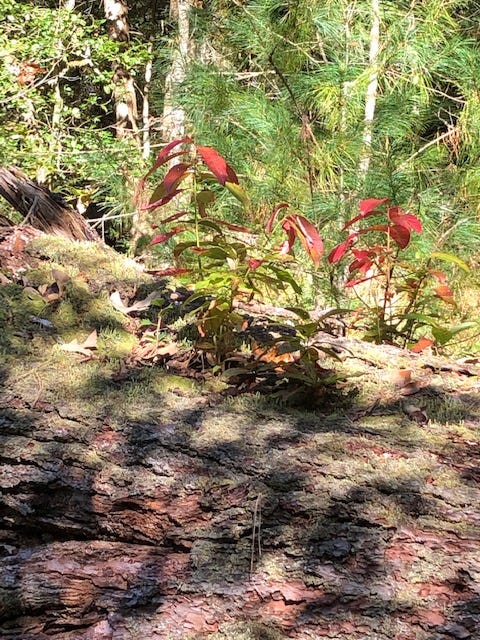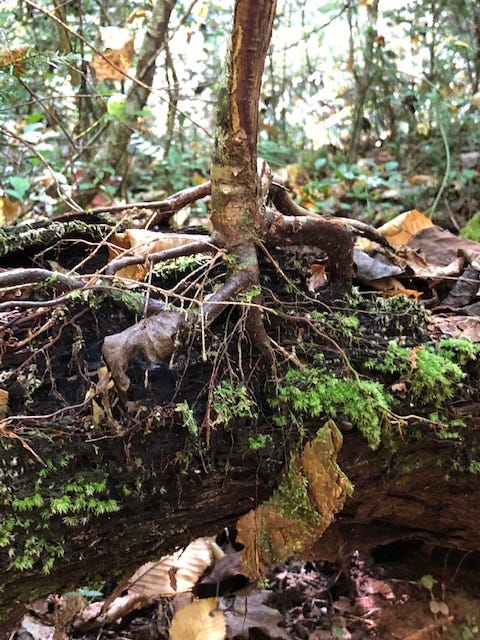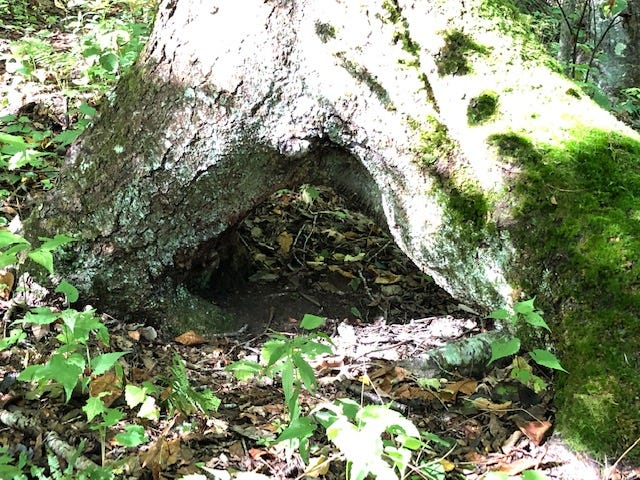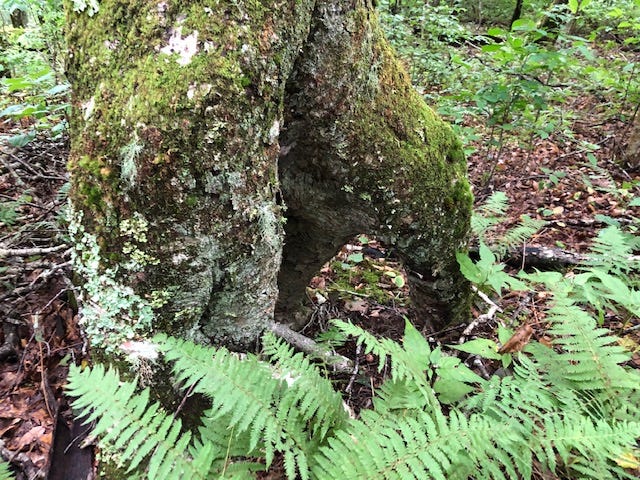Why is this tree on stilts?
I’ve always loved Lord of the Rings, ever since I was a child and we had a recording of The Hobbit on a record (that’s a vinyl disc that played scratchy sounds, for you Gen Z’s out there). Some of my favorite characters were the Ents, the talking, walking trees that helped the Hobbits. I liked to think about the trees around me just up and walking off one day. I could imagine the enormous red oak tree beside our house lumbering across the yard and down to the river, carrying me with it as I dangled from its rope swing.
So, imagine my surprise when I saw this tree on a hike recently:
It looks like it’s on tiptoes, frozen as we walk by, but ready to continue scuttling through the forest once we’ve turned our backs. So, I began to wonder…
Why is this tree on stilts?
Why is this tree so oddly shaped? I did some research and found that these trees on tiptoe grew out of what are called “nurse logs.” Nurse logs have fallen in the forest and begun the decaying process, but continue to serve their neighbors and descendants by offering up their bodies as food for others. Here in the South, we often see moss and vines growing from these fallen tree trunks, and we’ll occasionally see a small tree beginning its life in the decaying wood, such as this sourwood growing from a downed white pine:
Or this small tree growing out of a suspended log:
The tree on tiptoes (or stilts) pictured in the beginning likely grew out of a stump. As the stump decayed, the young tree’s roots reached for the ground to supplement the nourishment it received from the dying stump and once the stump was completely gone, the young tree was left standing on tiptoes.
In the photos below you can clearly see the space left below the trees where the nurse logs used to be:
The height of the empty space correlates to the diameter of the nurse log that used to support it.
Where I live in the Southeast, nurse logs generally host small mosses, lichens, and the occasional tree, as we’ve seen in the photos above. But in the Pacific Northwest rainforests, enormous Douglas fir, cedars, and hemlocks can live to be 500 years old and take equally as long to decay, meaning they provide life to the forest in one way or another for a millennium. Considering the collection of mosses, ferns, and small saplings growing from it, the nurse log can contain five times more living matter than when it was a standing tree. One way to see the evidence of a long-ago nurse log in those rainforest settings is by noticing an oddly straight row of trees – they likely grew out of a log that has since rotten away.
Next time you’re out in the woods, keep an eye out for these “tiptoe” trees – I’ve found several since I’ve begun to pay attention. I like to think of how they demonstrate the interdependence of all the parts of the forest – even after they’re technically “dead,” these logs continue to support life around them for many years.
Detritus
Hidden Life of Trees by Peter Wohlleben (p. 135)
Perhaps you’re so enamored of nurse logs from reading this newsletter that you’d like to get a nurse log tattoo?
poem about nurse logs
360 Video of redwood nurse log (click and drag during the video to see in all directions)
Nurse Log as art in Seattle – Neukom Vivarium
This octopus runs about like I imagine a tree would…
Thank you to everyone who subscribed after my first post! I was quite excited to get so many responses. This is only my second post, so I’d love to hear feedback, questions, comments, and your thoughts on nurse logs or other natural phenomena you’ve encountered. Please comment below!






